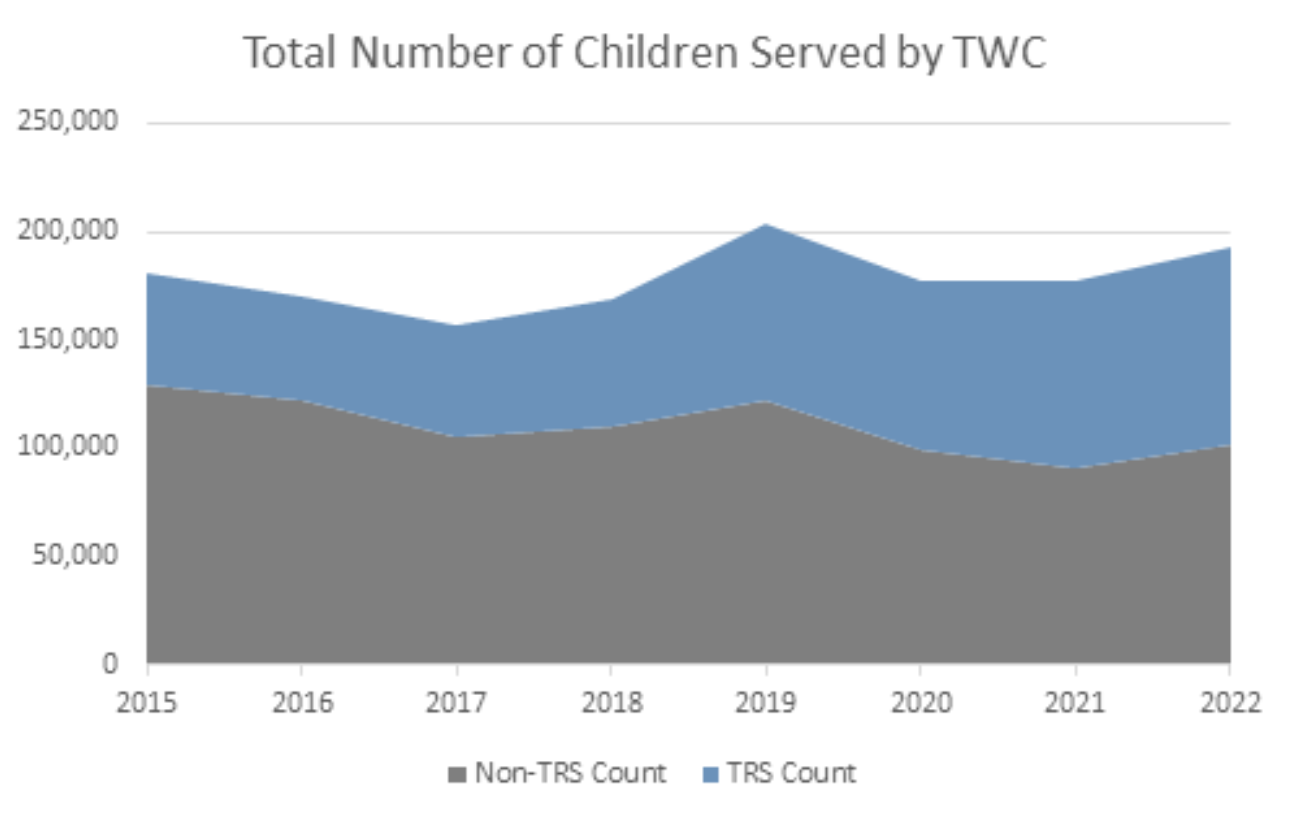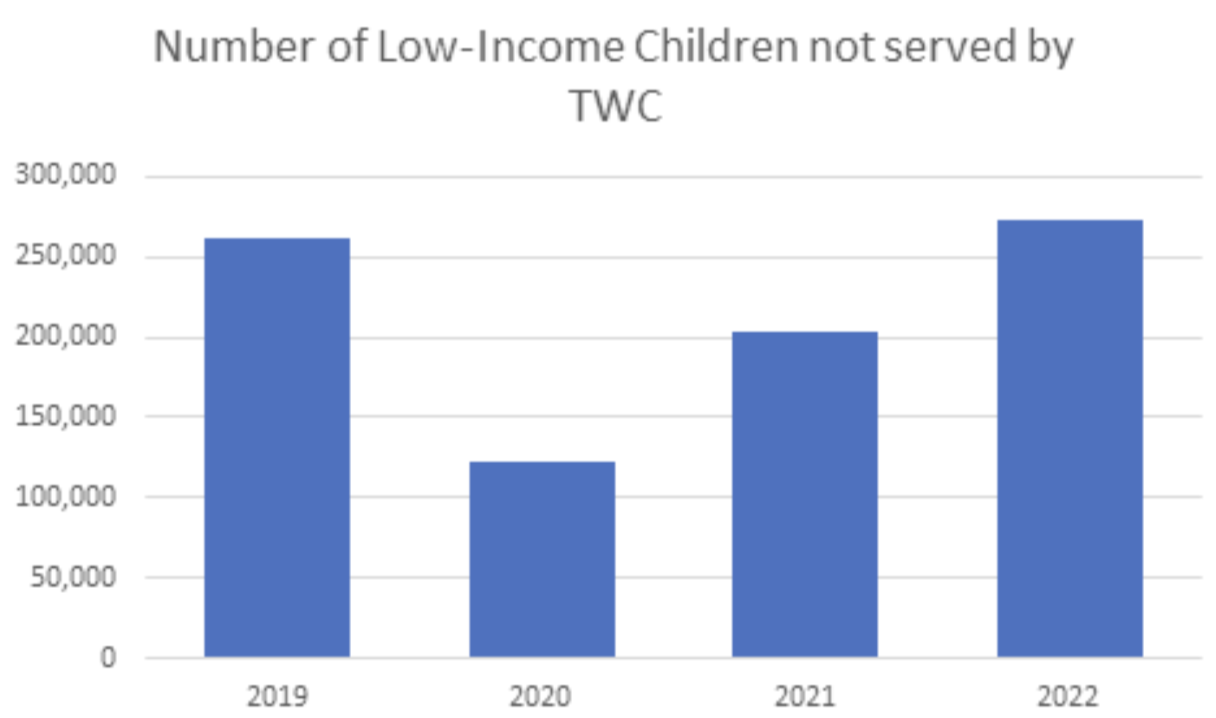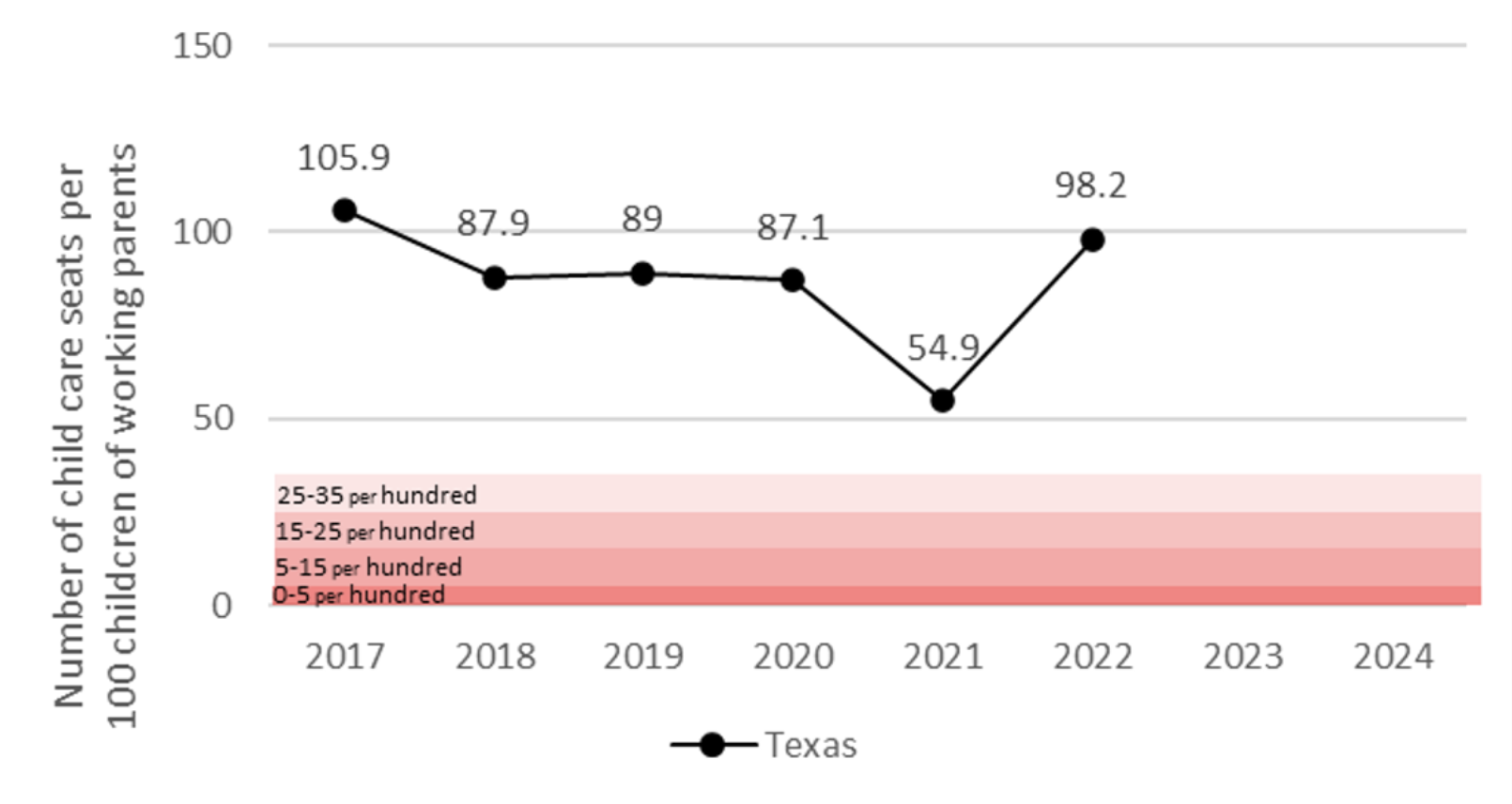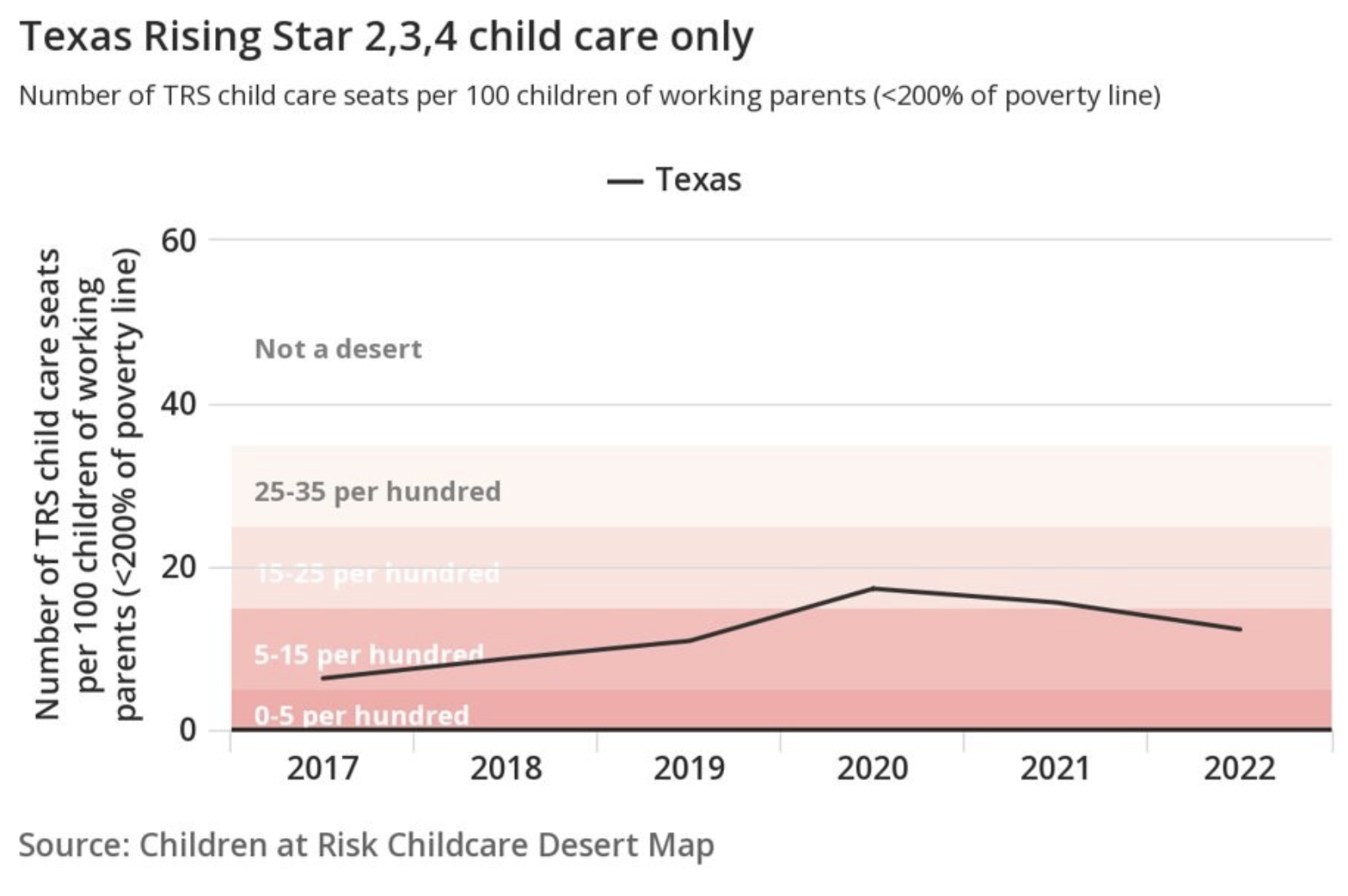By Neomi Fletcher, Early Childhood Education and Jacob Westjohn, Early Childhood Education
(Note: UPDATED JUNE 7, 2023. Data sources are all publicly available from the Texas Workforce Commission, TEA, and Family Service. This report uses data from October 1st, 2021-September 30th, 2022)
Texas Child Care Spaces
In Texas, availability of child care providers differ substantially depending on the zip code. Overall, access has not been well-supported in Texas in the past. This report discusses children ages 0-5 with at least one working parent living in Texas.
The number of children (0-5) with working parents has slightly declined in Texas compared to last year. Despite this, child care homes and centers saw an increase in child care enrollment resembling pre-pandemic numbers. Furthermore, only 13% of children are served by the Texas Statewide Systems, TEA (Texas Education Agency), Pre-K or Head Start programs. The Texas Statewide system refers to care in licensed centers, licensed homes, registered homes, and military providers and excludes Relative Care providers and Listed Home Providers.

Texas Rising Star
Texas Rising Star (TRS) is a quality rating system for child care programs participating in the Texas Workforce Commission’s (TWC) child care system. Texas Rising Star certification is available to licensed center programs and licensed and registered child care home programs that meet the certification criteria. The quality of care at participating programs is rated, and programs are recognized on a tiered system with 2-, 3-, and 4-star programs reaching progressively higher levels of quality.
Programs that achieve Texas Rising Star certification offer quality care that exceeds the state’s Minimum Child Care Licensing Standards for director and staff qualifications and training, teacher-child interactions, program administration, and indoor/outdoor learning environments. These programs provide quality early education experiences that contribute to the early development of children. As programs advance through the Texas Rising Star levels, they contribute more to the development of the children they serve daily.
The percentage of children served by TRS-rated providers are at an all-time high, with 47% of all children enrolled in a TRS provider. Affordable, high-quality child care leads to a variety of beneficial outcomes to children, their families, and the community at-large. Research shows that children who have access to quality child care have improved literacy skills (U.S. Dept. Of Health & Human Services, 2006). Economically disadvantaged children who receive high-quality child care are shown to have increased high school graduation rates which also leads to increased earnings in the future (Bustamante et al., 2021). Expanding child care leads to economic benefits for the community and can aid to bring families out of poverty.
Low-Income Families

While the number of children (0-5) with working parents in Texas (1,412,546 to 1,402,133) slightly declined, we see an increase in low-income children. According to data from the American Community Survey, 664,683 children lived below the 200% poverty line in Texas. In 2022, while there was an increase in subsidy seats available, fewer lower–income families were served through child care, Pre-K or Head Start programs in 2022. We are currently seeing the largest number of low–income families not served in Texas in the last three years.
The state of child care remains a topic of concern for child advocates. We continue to witness staffing shortages, inequitable pay, unaffordable rates for families, and limited access to quality care in several regions of Texas. Each year at Children at Risk we collect data to map out which regions of the state continue to lack child care options for the number of children residing in specific regions. Throughout the pandemic, the American Rescue plan made funds available that allowed centers to keep their doors open and new centers to be established. As a result, we saw an increase in seats available to young children throughout Texas. Unfortunately, this increase in availability was not extended to all families. There was a measurable decrease in the number of seats available to low-income families.

While we have seen an increase in capacity, we continue to monitor the status of enrollment. To enroll students, child care centers and child care homes must have a minimum number of staff. The ongoing teacher shortage in early childhood education indicates that all centers are not able to serve their maximum capacity currently.
We not only focus our concern on the state of child care programs, we additionally track the accessibility of parents to quality care. As mentioned earlier, while child care capacity increased, families receiving child care scholarships have not experienced an increase in the number of programs they have to choose from. Not only are there fewer spots available for families utilizing child care scholarships, there is also a decrease in spots that are certified as high-quality centers.

There are still 1,016 zipcodes throughout the state of Texas where the demand for high-quality, scholarship qualifying seats is three times the current availability. Furthermore, there are only 12.3 TRS child care seats per 100 children of working parents that live <200% of the federal poverty line, highlighting the continued need for high-quality subsidized child care in Texas. As Texas continues to have one of the largest child and youth populations in the nation, we must continue to fight for access to quality child care programs that parents can afford while working.